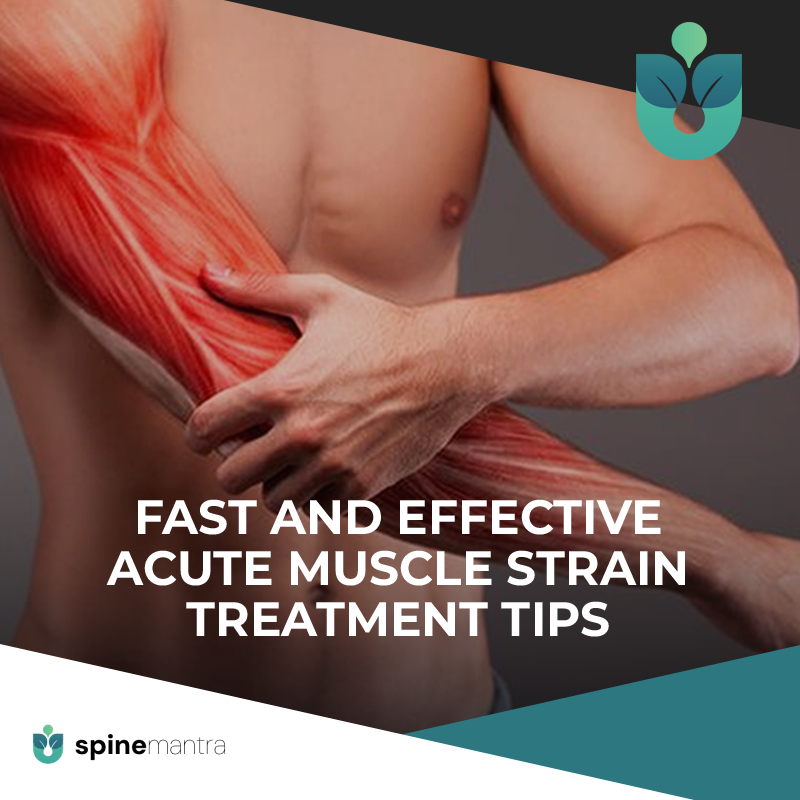From Ouch to Okay: Fast and Effective Acute Muscle Strain Treatment Tips

We’ve all been there—one second you’re reaching for something on the top shelf or crushing your workout, and the next, bam! That familiar zing shoots through your muscle, leaving you frozen in pain. Welcome to the world of acute muscle strains, where everyday movements turn into unexpected mini-dramas. But before you panic or throw in the towel, let’s dig into the good stuff: acute muscle strain treatment that actually works.
In this jam-packed, no-fluff guide, we’re breaking down everything from what causes muscle strains to how to treat them like a pro. Whether you’re a gym warrior, weekend hiker, or just someone who moved a little too quickly on a cold morning, this one’s for you!
Before we jump into the treatment zone, let’s clear up what we’re dealing with here. An acute muscle strain happens when muscle fibers are stretched beyond their limits or tear due to sudden or excessive force. Unlike chronic strains that sneak up over time, acute strains are fast, unexpected, and oh-so-painful.
Acute muscle strains usually sneak up when you’re least expecting it. Here’s a quick peek into the usual suspects:
So you pulled something, and now you’re wincing every time you move. What now? Let’s dive into the acute muscle strain treatment strategies that’ll get you back on your feet (and maybe even back to the gym) in no time.
1: R.I.C.E. – Your First Line of Defense
This age-old remedy isn’t just a catchy acronym—it’s your go-to move within the first 48 hours.
2: Over-the-Counter Pain Relief
Sometimes, a little chemical help doesn’t hurt.
3: Gentle Stretching and Mobility Work
Once the pain starts to ease (usually after a few days), it’s time to show your muscle some TLC with light stretching.
You’d be surprised how many folks unintentionally delay healing by doing the wrong things. Here’s what not to do:
Sometimes, DIY isn’t enough. Seek medical attention if:
You might need physical therapy, imaging tests, or even a specialist if things are more serious.
Once you’re out of the woods, the focus shifts to rebuilding strength and preventing repeat performances.
Smart Ways to Stay Injury-Free
While they won’t replace medical treatment, some natural helpers can complement your recovery.
Always check with a doctor before trying anything new, especially if you’re taking medications.
Q: How long does it take to recover from an acute muscle strain?
A: Mild strains may heal in 1–2 weeks, while moderate to severe strains can take 4–6 weeks or more. It really depends on the grade of the strain.
Q: Can I exercise during recovery?
A: Only gentle, non-strenuous activities after the acute phase (usually after the first 48–72 hours). Avoid anything that causes pain or stress to the injured muscle.
Q: Is massage good for muscle strains?
A: It can be—after the initial swelling has gone down. A trained massage therapist can help with circulation and tension, but skip the deep tissue stuff until fully healed.
Q: Do muscle strains require surgery?
A: Rarely. Only severe grade 3 tears (complete ruptures) may require surgical intervention.
Q: How do I know if it’s a strain and not something worse?
A: Strains involve muscles or tendons, while sprains affect ligaments. If you can’t move at all or heard a “snap,” see a doctor immediately—it could be a rupture or fracture.
Getting sidelined by an acute muscle strain can feel frustrating, but with the right care and patience, it doesn’t have to be a major setback. By following effective acute muscle strain treatment techniques—like RICE, gentle rehab, and smart prevention—you’ll be back doing your thing in no time. And maybe, just maybe, you’ll come out of it a little smarter and stronger than before.
So next time your muscle screams, you’ll know exactly what to do. And remember: rest is not weakness—it’s your superpower in disguise!